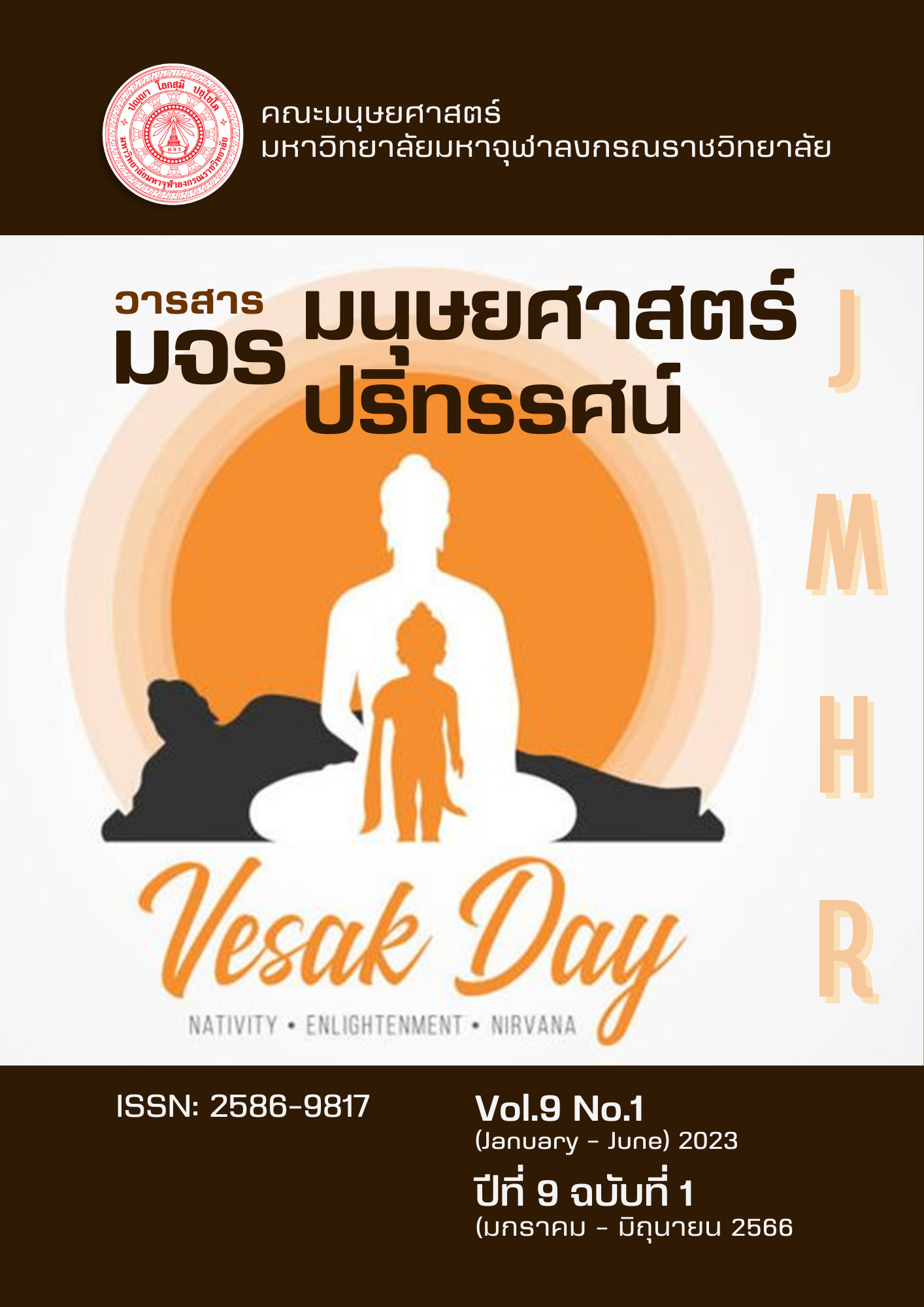การสร้างองค์กรแห่งความสุขโดยใช้พรหมวิหารสี่ตามแนวพุทธจิตวิทยา
คำสำคัญ:
องค์กร, ความสุข, พรหมวิหาร 4, พุทธจิตวิทยาบทคัดย่อ
ในภาวะปัจจุบันความกดดันในการทำงานมากขึ้นเนื่องจากมีการแข่งขันในที่ทำงานสูง จนทำให้เกิดความเครียดสูงขึ้น ความรู้สึกเอื้อเฟื้ออยากแบ่งปันลดลงและความสุขในการทำงานหายไป บทความนี้นำเสนอเกี่ยวกับการสร้างสุขในองค์กรโดยใช้พรหมวิหาร 4 ตามแนวคิดพุทธจิตวิทยา โดยต้องมีใจที่มีความเมตตาซึ่งกันและกัน สงสารอยากช่วยเหลืองานด้วยความเต็มใจ เกิดแรงบันดาลใจและความสุขใจพร้อมกระตือรือร้นในการทำงานเสมอ เกิดความพึงพอใจในการทำงานและมีความภาคภูมิใจในงานที่ทำ โดยมีความรู้สึกว่าได้ทํางานกับเพื่อนร่วมงานที่ดีและรับรู้ว่างานที่ทํานั้นมีความสําคัญมีคนเห็นคุณค่าของงานที่ทําและมีความสุขในที่ทํางาน โดยได้นำพุทธธรรมพรหมวิหาร 4 เข้ามาใช้เป็นแนวคิดในการสร้างความสุขในการทำงาน และนำแนวทางการสร้างองค์กรแห่งความสุข 8 ประการมาบูรณการเป็นแนวทางในการปฏิบัติงานร่วมกันและในวาระทำกิจกรรมร่วมกันขององค์กรปฏิบัติจนเป็นวัฒนธรรมที่ยั่งยืนในองค์กร เพื่อทำให้เกิดการทำงานร่วมกันอย่างมีความสุขและเป็นการสร้างขวัญกำลังใจในการทำงานของบุคคลในองค์กร ซึ่งจะเสริมสร้างประสิทธิภาพการทำงานให้ดียิ่งขึ้นได้อีกด้วย ทำให้เกิดงานสัมฤทธิ์ผลและคนทำงานมีความสุขในการทำงานต่อไป
เอกสารอ้างอิง
กรมสุขภาพจิต กระทรวงสาธารณสุข. (2565). ดัชนีความสุขทางรอดของสังคมไทย. นนทบุรี :ชื่นฤทัย กาญจนะจิตรา และคณะ. (2551). คุณภาพชีวิตคนทำงานในภาคอุตสาหกรรมและภาคบริการ. นครปฐม : สถาบันวิจัยประชากรและสังคม มหาวิทยาลัยมหิดล.
ฐาปนี วังกานนท์. (2556). ปัจจัยด้านการทำงานที่มีอิทธิพลต่อความเครียดของพนักงาน: กรณีศึกษา บริษัท แอมพาส อินดัสตรีจากัด (วิทยานิพนธ์บริหารธุรกิจมหาบัณฑิต). มหาวิทยาลัยเทคโนโลยีราชมงคลธัญบุรี. ปทุมธานี.
ชาญวิทย์ วสันต์ธนารัตน์. (2551). Happy8 คัมภีร์ความสุขยุคใหม่. วารสารการบริหารคน, 29(1), 18-21.
ประเวศ วะสี. (2551). กรุ่นกลีบความสุข เส้นทางสู่ความสุขโดย 12 นักคิด–นักกิจกรรมเพื่อสังคม. กรุงเทพน : กรีน – ปัญญาญาณ.
พระพุทธโฆษาจารย์ง (2548). คัมภีร์วิสุทธิมรรค ฉบับ 100 ปี (พิมพ์ครั้งที่ 6). กรุงเทพฯ : บริษัท ธนาเพรส จำกัด.
พระพรหมคุณาภรณ์ (ป.อ. ปยุตฺโต). (2548). พจนานุกรมพุทธศาสตร์ ฉบับประมวลธรรม (พิมพ์ครั้งที่ 13). กรุงเทพฯ : บริษัทเอส.อาร์.พริ้นติ้งแมสโปรดักส์ จำกัด.
ราชบัณฑิตยสถาน. (2557). พจนานุกรมฉบับราชบัณฑิตยสถาน พ.ศ.2554 (พิมพ์ครั้งที่2). กรุงเทพฯ : นานมีบุ๊คส์พับลิเคชั่น.
สมเด็จพระญาณสังวรสมเด็จพระสังฆราช (เจริญ สุวฑฺฒโน). (2548). รวมธรรมะ. กรุงเทพฯ: บริษัทอมรินทร์พริ้นติ้ง แอนด์พับลิชชิ่ง จำกัด มหาชน.
ดาวน์โหลด
เผยแพร่แล้ว
รูปแบบการอ้างอิง
ฉบับ
ประเภทบทความ
หมวดหมู่
สัญญาอนุญาต
ลิขสิทธิ์ (c) 2023 วารสาร มจร มนุษยศาสตร์ปริทรรศน์

อนุญาตภายใต้เงื่อนไข Creative Commons Attribution-NonCommercial-NoDerivatives 4.0 International License.






